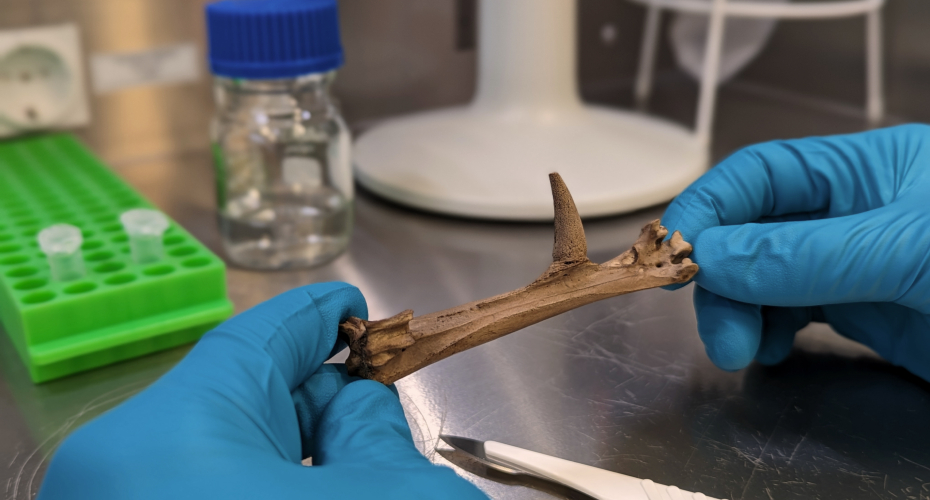Ancient DNA reveals how a chicken virus evolved to become more deadly

Photo by Steven Fiddaman
An international team of geneticists, biologists and archaeologists have used ancient DNA to trace the evolution of a global pathogen that causes fatal infections in chickens around the world.
The team, which includes archaeologists at the University of Exeter, has recovered and reconstructed ancient Marek’s Disease Virus (MDV) sequences from archaeological chickens spanning the past 1,000 years.
By comparing viral genomes derived from both modern and ancient birds, they were able to pinpoint the genetic alterations responsible for the increased virulence of the modern virus.
The findings, published in the journal Science, show how viruses evolve to become more virulent and could lead to the development of better ways to treat viral infections.
Led by the University of Oxford and LMU Munich, the new study is based on DNA isolated from chicken bones that were excavated from 140 archaeological sites in Europe and the Near East.
The University of Exeter played a leading role in this work in an earlier Arts and Humanities Research Council-funded project.
Professor Naomi Sykes, Head of the Department of Archaeology and History, said: “This study underscores the profound significance of biological material preserved in archaeological and museum collections since we cannot foresee how their investigation might possess transformative applications in the future.”
The ancient genomes revealed that MDV was widespread in European chickens at least 1,000 years before the disease was first described in 1907. When first described, this disease only led to mild symptoms in older chickens. As chicken consumption dramatically increased in the 1950s and 1960s, MDV has continued to evolve and has become increasingly aggressive despite the development of several vaccines.
Currently, MDV costs the poultry industry more than $1 billion per year, but this breakthrough not only sheds light on the evolutionary history of MDV, but also holds promise for the development of more effective therapies against this devastating poultry disease. It also highlights the importance of preserving archaeological remains, especially given their power to reveal valuable insights into the evolution of virulence.

First author Dr Steven Fiddaman, in the Department of Biology, University of Oxford, said: “Our findings not only unravel the evolutionary history of the Marek’s Disease Virus but also provide a foundation for enhancing our current understanding of pathogen virulence. By combining ancient DNA techniques with modern genomics, we’ve opened a window into the past that can guide future strategies in managing viral diseases.”
Professor Laurent Frantz, co-senior author at LMU Munich, added: “Our work highlights the power of interdisciplinary collaboration, bringing together paleogeneticists, virologists, archaeologists, and biologists to unravel the complex evolutionary history of a pathogen with significant economic and agricultural implications.”
And Professor Adrian Smith, also of the Department of Biology at Oxford and co-senior author, added: “Ancient DNA has provided us with a unique perspective on the emergence of MDV as a deadly chicken virus and may teach us lessons that are applicable to the control of other viral infections of medical and veterinary importance.”



